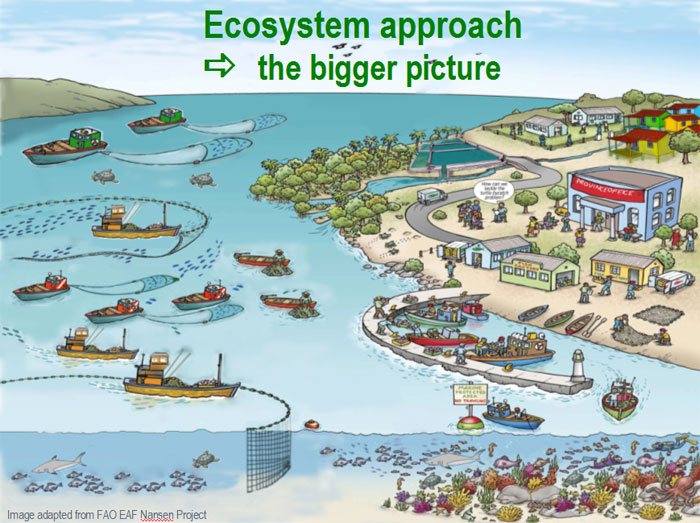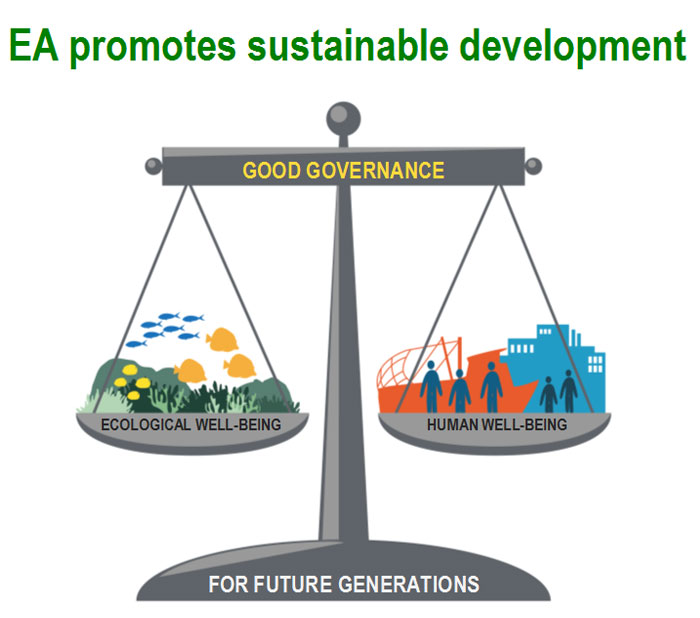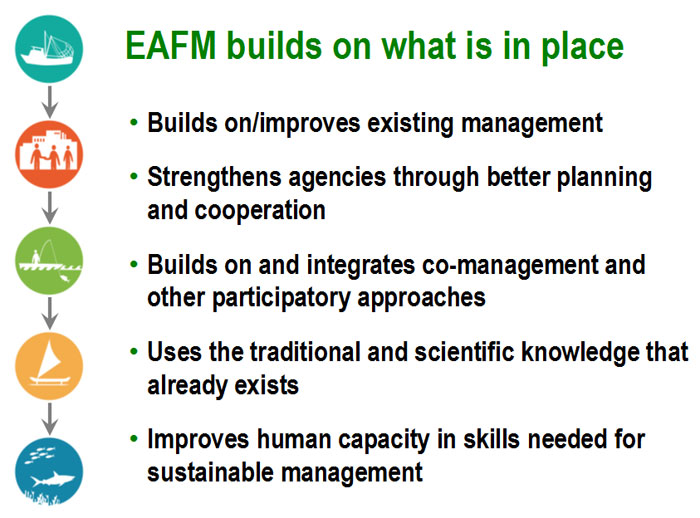About EAFM
The ecosystem approach offers a practical and effective means to manage fisheries more holistically. It represents a move away from fisheries management that focuses on target species, towards systems and decision-making processes that balance environmental, human and social well-being within improved governance frameworks.
- EAFM is an integrated management approach across land, water and natural resources that promotes both sustainable use and conservation of the systems that are already connected in the nature/environment;
- EAFM looks at the bigger picture. It recognises that fish and fisheries are part of a broader ecosystem that includes where fish live as well as the people who benefit from catching, trading and eating fish.
- EAFM recognizes the reality that fisheries depend on healthy ecosystems and that different components in an ecosystem, such as fish, habitats, fishers and other users are all connected and can impact each other.
- EAFM strives to find a balance between improving the well-being of the people and building or maintaining a healthy environment so that the benefits derived from fishing are sustained.
- EAFM strives to increase the benefits derived from catching fish without destroying the environment on which fish depend.
- EAFM considers the broader ecological, social and economic dimensions of sustainable development in fisheries and the interactions among ecosystem components. Examples include fish and fishing, post-harvest processing, habitats, pollution and other users;
- EAFM provides a framework to proactively address the underlying issues in a fishery by taking a more thoughtful long-term perspective to planning and management.
- EAFM provides a fisheries relevant framework to help you bring different management strategies/approaches/tools (e.g. co-management, coastal zone management, MPAs etc) together in a clear, logical and structured approach
- EAFM allows the threats to the long-term sustainability of the fishery to be viewed alongside shorter-term economic needs. Trade-offs and compromise agreements can be reached on actions to reduce impacts and enhance compliance.
- EAFM recognises that complex problems facing fisheries may require solutions outside the fishery sector. The use of an EAFM allows outside factors to be recognized and potentially opens the way for constructive dialogue. It also helps find solutions for mitigating negative impacts in different sectors, (e.g. labour and working conditions; vessel registration and licensing; interactions with tourism; improved sewage treatment; zoning of dredging to avoid nursery grounds).
For many, these are new concepts and considerations.



To view the brochure click here





